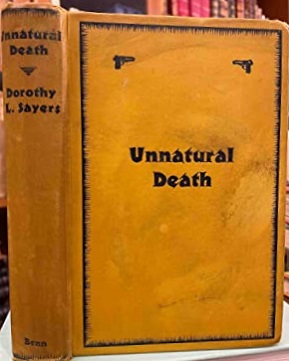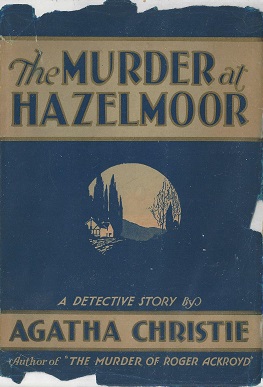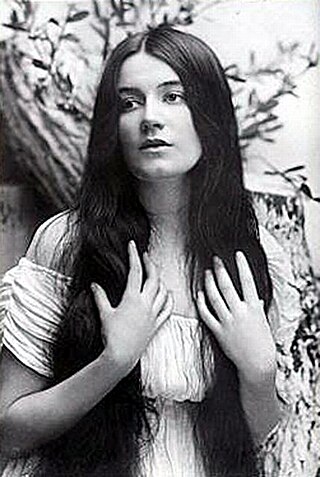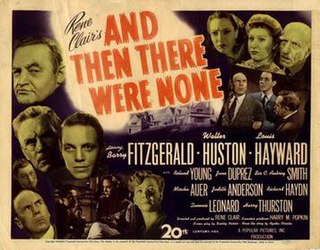
Trent's Last Case is a detective novel written by E. C. Bentley and first published in 1913. Despite the title, it is in fact the first work in which its central character, the artist and amateur detective Philip Trent, appears: he subsequently reappeared in the novel Trent's Own Case (1936), and the short-story collection Trent Intervenes (1938).

Unnatural Death is a 1927 mystery novel by Dorothy L. Sayers, her third featuring Lord Peter Wimsey. It was published under the title The Dawson Pedigree in the United States in 1928.

Busman's Honeymoon is a 1937 novel by Dorothy L. Sayers, her eleventh and last featuring Lord Peter Wimsey, and her fourth and last to feature Harriet Vane.

The Detection Club was formed in 1930 by a group of British mystery writers, including Agatha Christie, Dorothy L. Sayers, Ronald Knox, Freeman Wills Crofts, Arthur Morrison, Hugh Walpole, John Rhode, Jessie Rickard, Baroness Emma Orczy, R. Austin Freeman, G. D. H. Cole, Margaret Cole, E. C. Bentley, Henry Wade, Constance Lindsay Taylor and H. C. Bailey. Anthony Berkeley was instrumental in setting up the club, and the first president was G. K. Chesterton. There is a fanciful initiation ritual with an oath written by Sayers, and the club holds regular dinner meetings in London.

Freeman Wills Crofts FRSA was an Irish engineer and mystery author, remembered best for the character of Inspector Joseph French.

The Moving Finger is a detective novel by British writer Agatha Christie, first published in the USA by Dodd, Mead and Company in July 1942 and in the UK by the Collins Crime Club in June 1943. The US edition retailed at $2.00 and the UK edition at seven shillings and sixpence.

The Mysterious Mr Quin is a short story collection by British writer Agatha Christie, first published in the UK by William Collins & Sons on 14 April 1930 and in the US by Dodd, Mead and Company later in the same year. The UK edition retailed at seven shillings and sixpence (7/6) and the US edition at $2.00.

The Murder at the Vicarage is a work of detective fiction by British writer Agatha Christie, first published in the UK by the Collins Crime Club in October 1930 and in the US by Dodd, Mead and Company later in the same year. The UK edition retailed at seven shillings and sixpence and the US edition at $2.00.

Sad Cypress is a work of detective fiction by British writer Agatha Christie, first published in the UK by the Collins Crime Club in March 1940 and in the US by Dodd, Mead and Company later in the same year. The UK edition retailed at eight shillings and threepence (8/3) – the first price rise for a UK Christie edition since her 1921 debut – and the US edition retailed at $2.00.

The Sittaford Mystery is a work of detective fiction by British writer Agatha Christie, first published in the US by Dodd, Mead and Company in 1931 under the title of The Murder at Hazelmoor and in UK by the Collins Crime Club on 7 September of the same year under Christie's original title. It is the first Christie novel to be given a different title for the US market. The US edition retailed at $2.00 and the UK edition at seven shillings and sixpence (7/6).

Why Didn't They Ask Evans? is a work of detective fiction by Agatha Christie, first published in the United Kingdom by the Collins Crime Club in September 1934 and in the United States by Dodd, Mead and Company in 1935 under the title of The Boomerang Clue. The UK edition retailed at seven shillings and sixpence (7/6) and the US edition at $2.00.

Murder Is Easy is a detective fiction novel by Agatha Christie first published in the UK by the Collins Crime Club in June 1939, and in the US by Dodd, Mead and Company in September the same year under the title Easy to Kill. Christie's Superintendent Battle has a cameo appearance at the end, but plays no part in either the solution of the mystery or the apprehension of the criminal. The UK edition retailed at seven shillings and sixpence (7/6), and the US edition at $2.

The Paradoxes of Mr. Pond is G. K. Chesterton's final collection of detective stories, published after his death in 1936. Of the eight mysteries, seven were first printed in the Storyteller magazine. The Unmentionable Man was unique to the book.

The Thirteen Problems is a short story collection by British writer Agatha Christie, first published in the UK by Collins Crime Club in June 1932 and in the US by Dodd, Mead and Company in 1933 under the title The Tuesday Club Murders. The UK edition retailed at seven shillings and sixpence (7/6) and the US edition at $2.00. The thirteen stories feature the amateur detective Miss Marple, her nephew Raymond West, and her friend Sir Henry Clithering. They are the earliest stories Christie wrote about Miss Marple. The main setting for the frame story is the fictional village of St Mary Mead.

One, Two, Buckle My Shoe is a work of detective fiction by Agatha Christie first published in the United Kingdom by the Collins Crime Club in November 1940, and in the US by Dodd, Mead and Company in February 1941 under the title of The Patriotic Murders. A paperback edition in the US by Dell books in 1953 changed the title again to An Overdose of Death. The UK edition retailed at seven shillings and sixpence (7/6) while the United States edition retailed at $2.00.

Walter Fitzgerald Bond was an English character actor.

Black Coffee is a play by the British crime-fiction author Agatha Christie (1890–1976) which was produced initially in 1930. The first piece that Christie wrote for the stage, it launched a successful second career for her as a playwright. In the play, a scientist discovers that someone in his household has stolen the formula for an explosive. The scientist calls Hercule Poirot to investigate, but is murdered just as Poirot arrives with Hastings and Inspector Japp.

A Catalogue of Crime is a critique of crime fiction by Jacques Barzun and Wendell Hertig Taylor, first published in 1971. The book was awarded a Special Edgar Award from the Mystery Writers of America in 1972. A revised and enlarged edition was published in 1989. Barzun and Taylor both graduated in the class of 1924 from Harrisburg Technical High School.

Violet Hopson was an actress and producer who achieved fame on the British stage and in British silent films. She was born Elma Kate Victoria Karkeek in Port Augusta, South Australia on 16 December 1887. Violet Hopson was her stage name, while in childhood she was known as Kate or Kitty to her family.

And Then There Were None is a 1945 film adaptation of Agatha Christie's 1939 mystery novel of the same name, directed by René Clair. It was released in the United Kingdom as Ten Little Indians, in keeping with the third United Kingdom title of Christie's novel. The film was released by 20th Century Fox and due to the lapsed copyright, it is now in the public domain. The film has been remastered multiple times and is freely available online.



















